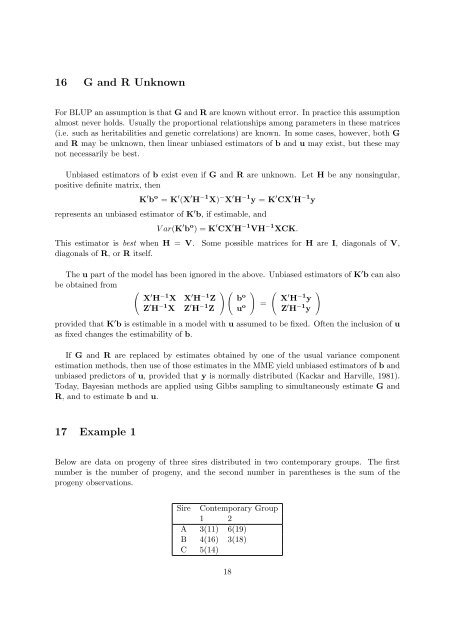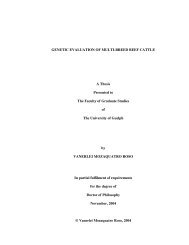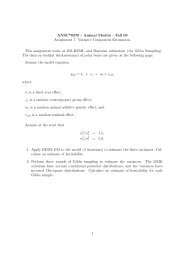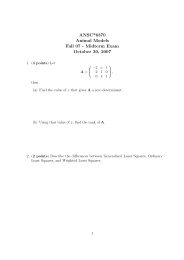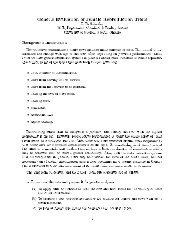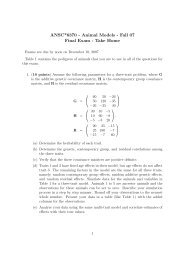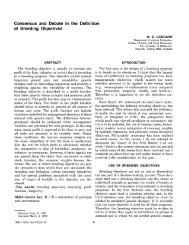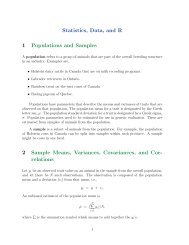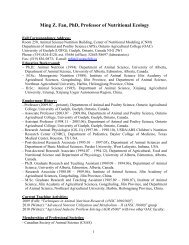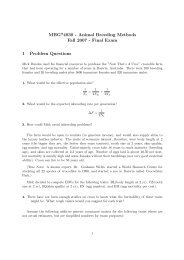Prediction Theory 1 Introduction 2 General Linear Mixed Model
Prediction Theory 1 Introduction 2 General Linear Mixed Model
Prediction Theory 1 Introduction 2 General Linear Mixed Model
You also want an ePaper? Increase the reach of your titles
YUMPU automatically turns print PDFs into web optimized ePapers that Google loves.
16 G and R Unknown<br />
For BLUP an assumption is that G and R are known without error. In practice this assumption<br />
almost never holds. Usually the proportional relationships among parameters in these matrices<br />
(i.e. such as heritabilities and genetic correlations) are known. In some cases, however, both G<br />
and R may be unknown, then linear unbiased estimators of b and u may exist, but these may<br />
not necessarily be best.<br />
Unbiased estimators of b exist even if G and R are unknown. Let H be any nonsingular,<br />
positive definite matrix, then<br />
K ′ b o = K ′ (X ′ H −1 X) − X ′ H −1 y = K ′ CX ′ H −1 y<br />
represents an unbiased estimator of K ′ b, if estimable, and<br />
V ar(K ′ b o ) = K ′ CX ′ H −1 VH −1 XCK.<br />
This estimator is best when H = V. Some possible matrices for H are I, diagonals of V,<br />
diagonals of R, or R itself.<br />
The u part of the model has been ignored in the above. Unbiased estimators of K ′ b can also<br />
be obtained from<br />
( ) ( ) ( )<br />
X ′ H −1 X X ′ H −1 Z b<br />
o X<br />
Z ′ H −1 X Z ′ H −1 Z u o =<br />
′ H −1 y<br />
Z ′ H −1 y<br />
provided that K ′ b is estimable in a model with u assumed to be fixed. Often the inclusion of u<br />
as fixed changes the estimability of b.<br />
If G and R are replaced by estimates obtained by one of the usual variance component<br />
estimation methods, then use of those estimates in the MME yield unbiased estimators of b and<br />
unbiased predictors of u, provided that y is normally distributed (Kackar and Harville, 1981).<br />
Today, Bayesian methods are applied using Gibbs sampling to simultaneously estimate G and<br />
R, and to estimate b and u.<br />
17 Example 1<br />
Below are data on progeny of three sires distributed in two contemporary groups. The first<br />
number is the number of progeny, and the second number in parentheses is the sum of the<br />
progeny observations.<br />
Sire Contemporary Group<br />
1 2<br />
A 3(11) 6(19)<br />
B 4(16) 3(18)<br />
C 5(14)<br />
18


